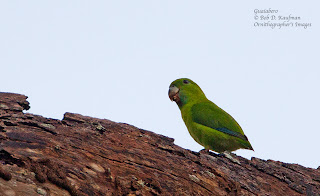From a distance....we watched....emitting sighs of frustration.
Frustration because the birds were quite far even for our long lenses. Frustration because the birds we hoped to see were a no-show. Yet despite these, the sighs of frustration were only of minor consequence compared to the delight of the company we shared. The passage of time becomes a blur when you are with friends who share the same passion with you.
We were at the "deck" next to the TREES (Tropical REsources and Ecosystems Sustainability) Hostel in the campus of the University of the Philippines in Los Banos (UPLB).
It all started when our dear friend Maia reported in her blog that the ficus trees near the hostel were now fruiting (and therefore attracting a lot of birds). That certainly perked our interest. It turned out that we were not the only ones. Monday afternoon we got a text message from fellow bird photographer and good friend, Tina Mallari. She wanted to know if we would like to join her at UPLB early Tuesday morning. We of course said yes. I then contacted Prof. Tirso Paris who resides close to the UPLB. He promised to meet us at the TREES hostel grounds.
For about three hours all four of us: Tina, Prof. Tirso, Cynthia and myself watched the fruiting trees but were frustrated by the non-appearance of the hoped for Luzon Hornbills. Thankfully the tall dead tree next to the ficus was where the action was. It was like a relay station where one species would perch, spend a few minutes, then fly off - only to be replaced by another species - sometimes consisting of more than one individual. Now let me explain here that the said dead tree was very tall, therefore the birds that perched on it were practically dots on our camera viewfinders - despite the 500mm lenses that Tina and I were using.
The first group were the noisy balicassiaos, calling raucously, their glossy dark feathers glowing in the early morning sun.
As the Balicassiaos left, the endemic Guaiaberos made their appearance.
The tiny green birds were replaced by the Coppersmith Barbets giving out their monotonous hammering call. The Barbets were the frequent occupiers of this particular dead tree. They would return to the tree every now and then and oftentimes bullying whoever was at that place at that particular time.
The Stripe-headed Rhabdornis came next - only when the Barbets were out of sight.
Finally, a lifer! I didn't realize it until we were already home and I was checking our photographs. When I first saw it, I thought it was the Grey-streaked Flycatcher. But Grey-streaked Flycatchers are migrants - was the thought that kept bothering me. So when I looked at the Kennedy Guide, I realized that what I saw was actually a Striped Flowerpecker. There were indeed a huge flock of flowerpeckers feasting on the fruits of the ficus tree. I saw Orange-bellied and Red-keeled among them. It is very likely then that one of those could be a Striped Flowerpecker. My suspicion was further confirmed by our friend, Adri Constantino, when I showed him the photo I took.
It was half-past ten and still no signs of the Luzon Hornbills. Having had our fill of the company of birds in the TREES parking area, Prof. Tirso suggested we go to IRRI next and see what it has in store for us birdwise.
Great Egrets setting up house
6 days ago








1 comment:
Wow! Congratulations on the lifer, Tito Bob =) I was on the lookout for them last time we were there but didn't see them... next trip again =)
Post a Comment